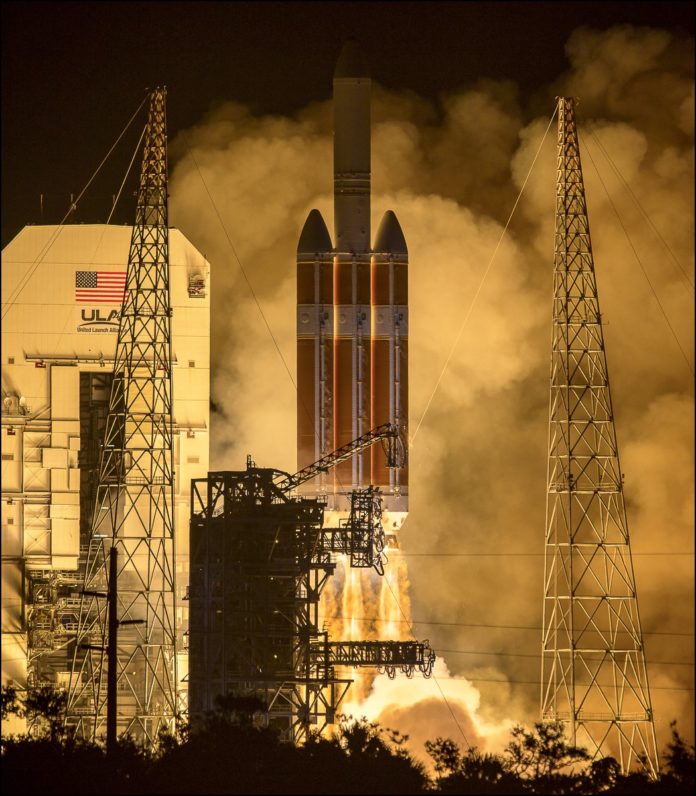Parker Solar Probe is a planned NASA’s robotic spacecraft to probe the outer corona of the Sun. It will approach to within 8.86 solar radii from the “surface” of the Sun and will travel at closest approach, as much as 700,000 km/h.
Earlier, the launch date was scheduled on 11 August 2018, at 3:33 a.m. EDT from Launch Complex 37, Cape Canaveral Air Force Station, Florida. But due to a technical snag, the launch date was delayed and scheduled on Sunday, Aug. 12, at 3:31 a.m. EDT (0731 GMT) during a window that will remain open for 65 minutes.
On Sunday, Aug. 12, at 3:31 a.m. EDT (0731 GMT), the humanity’s first mission: Touch the Sun, with Parker Solar Probe, took off for the journey of studying sun’s surface. Parker Solar Probe will make its journey all the way to the Sun’s atmosphere, or corona — closer to the Sun than any spacecraft in history.
The @ulalaunch #DeltaIVHeavy, with the Parker #SolarProbe onboard, launches to the Sun! Follow the link to more images as they come in! https://t.co/nZMjaDfkDG pic.twitter.com/55naMVq5TO
— NASA HQ PHOTO (@nasahqphoto) August 12, 2018
The spacecraft has the size of a car. Covered with revolutionary a 4.5-inch-thick (11.43 cm) carbon-composite heat shield, it will fly through the outermost part of the sun’s atmosphere, called corona.
It will trace how energy and heat move through the solar corona and to explore what accelerates the solar wind as well as solar energetic particles.
READ: Traveling to the Sun: Why won’t Parker solar probe melt?
The heat shield is made of a 4.5-inch thick carbon composite foam material between two carbon fiber face sheets. While the Sun-facing side simmers at 2,500 degrees Fahrenheit, behind the shield the spacecraft will be a cozy 85 degrees Fahrenheit.
Moreover, the spacecraft holds a microchip carrying the names of more than 1.1 million participants who signed up to send their name to the Sun.
Nestled atop a United Launch Alliance Delta IV Heavy — one of the world’s most powerful rockets — with a third stage added, Parker Solar Probe blasted off toward the Sun with a whopping 55 times more energy than is required to reach Mars. About the size of a small car, it weighs a mere 1,400 pounds.
Parker Solar Probe will reach speeds up to 430,000 miles per hour — fast enough to get from Philadelphia to Washington, D.C., in a second — setting the record for the fastest spacecraft in history. During its nominal mission lifetime of just under 7 years, Parker Solar Probe will complete 24 orbits of the Sun — reaching within 3.8 million miles of the Sun’s surface at closest approach.
Parker Solar Probe is also the first NASA mission to be named after a living individual: Dr. Eugene Parker, a famed solar physicist who in 1958 first predicted the existence of the solar wind, the stream of charged particles and magnetic fields that flow continuously from the Sun, bathing Earth.
The spacecraft’s path through the corona allows it to observe the acceleration of the very solar wind that Parker predicted, right as it makes a critical transition from slower than the speed of sound to faster than it.
Three months later, Parker Solar Probe will reach its first close approach of the Sun in November 2018, and will send the data back in December.
